This is my 303rd day spent at LCO. Most of our crew of AOistas have left, it’s down to just Laird, Alfio, Katie, and Jared, with the addition of Kate who joined us tonight.
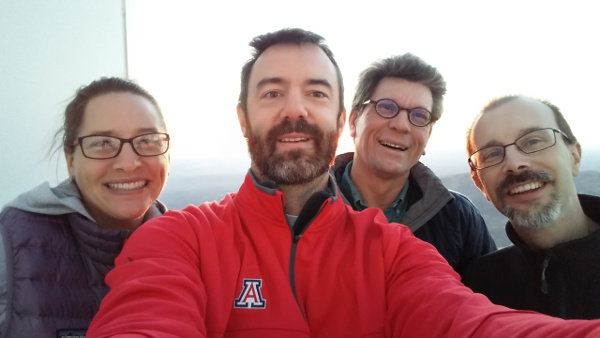
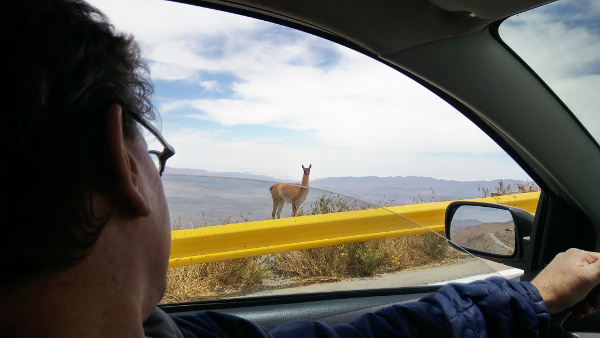

Home of MagAO and MagAO-X.
Marco, Runa, Enrico, and Fernando left yesterday. Kelsey and Lauren left today. And Simone and Armando are leaving tomorrow. After Laird’s very nice technical post yesterday, I will just have some pretty pictures for today. We started the evening with a very delicious meal of Hector’s pizza which is so good! Then we got back on the CRO to take more interaction matrices, after the success of yesterday’s brief on-sky test of our basic calibrations.
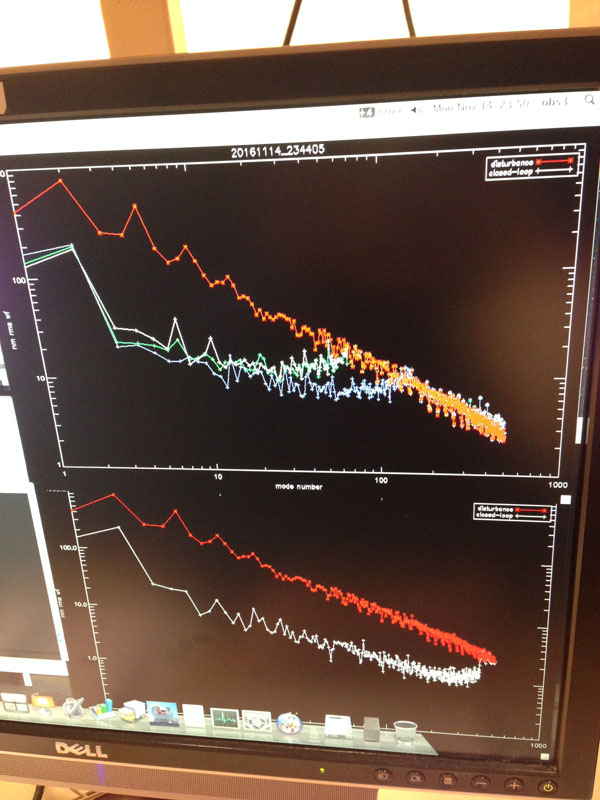
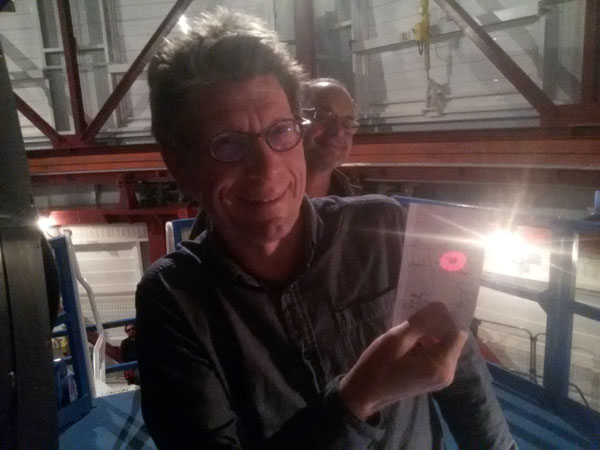


Great News MagAO’ers and lovers of the Blog
Today we went on-sky after a day of taking interaction matrices (IMATs).
We have made many improvements to MagAO since we had to also rebuild so much after the glycol leak. It has been a 10 month saga that has been quite a strain on all of us — but thanks to our great friends in Italy (Arcetri, Microgate and ADS) it has been a manageable storm to weather.
Here is a short list of how we got through our our repair saga:
On Feb 19, 2016 Marco and Runa (and Laird) flew, in a rush, to Chile to help Jared and Katie remove and clean the ASM (which was quite dirty from Glycol)
Then about 3 months later (May/June) we had another 3 week trip to Chile to further repair the ASM:
Brian Smith (U. Arizona) and I replaced 47 capacitors on the reference body with new silver ones (see the “Spray Silver” part of Katie’s MagAO-R post)
Katie and Jared cleaned and replaced ~100 actuators, and Mario replaced all the damaged electronics
We also replaced a failing computer (BCU) internet card in the ASM.
Mario and Enzo replaced and repaired all the ASM cooling that might fail again. All the fuses were replaced.
Then about 2 month later (September) we came again to Chile to replace the failed capacitor spring contact board and place new contacts on little 100×300 micron gold pads. This was very tricky and needed to be exactly the right size and shape (at the 10s of microns level) but was well executed by Federico of Microgate.
Then we set the ASM for full Electromech testing over the next 10 days with remote support from Marco and Runa (and Armando). Meanwhile the MagAO 2K PI (Jared) was hard at work trying to upgrade MagAO to run at 2kHz. He got our CCD39 running at 2kHz!
Then the ASM (in the clean room) was run remotely from Arcetri to continue testing.
Then our big November engineering run started (we are in the middle of that now). First we had to install an interferometer to calibrate the smallest (nm scale) motions of the repaired (and now miscalibrated) position sensors (the capacitors). This had never been done before in Chile –but Jared and I (with Manny from LBTI) designed a new mount for the 4D interferometer shipped from Arcetri. This all worked, and we had fringes from Runa and Marco’s interferometer. Meanwhile Fernando (GMT) came to help us construct an amazing new BASIS set with Simone and Armando to allow MagAO to work with a higher number of modes (even if we had many unilluminated actuators in the center of our ASM). Then we had to align the whole system again for the NAS and then flatten the shell again with the newly aligned wavefront sensor. Then today Alfio, Simone, and Armando took the IMATs need to test if MagAO still worked and if it is now possible to work with more than 300 modes on-sky (something we could not do before the repair upgrade). Also to help make that happen Jared’s 2K plans had a new camera lens fabericated so Enrico and Lauren could align the PWFS CCD to have 10% bigger pupils (to enable better sampled modes) see here for more on this successful (and very tricky) alignment. Also Mario and Jared got our new PI 331.04 Tip Tilt mirror running at 2 kHz as well with our new high voltage driver board. So you see we have been busy!
Today After one day of taking interaction matrices (IMATs). Alfio, Simone, and Armando made 400 mode IMATs with modulation radii of 3.0, 1.0 and even zero!
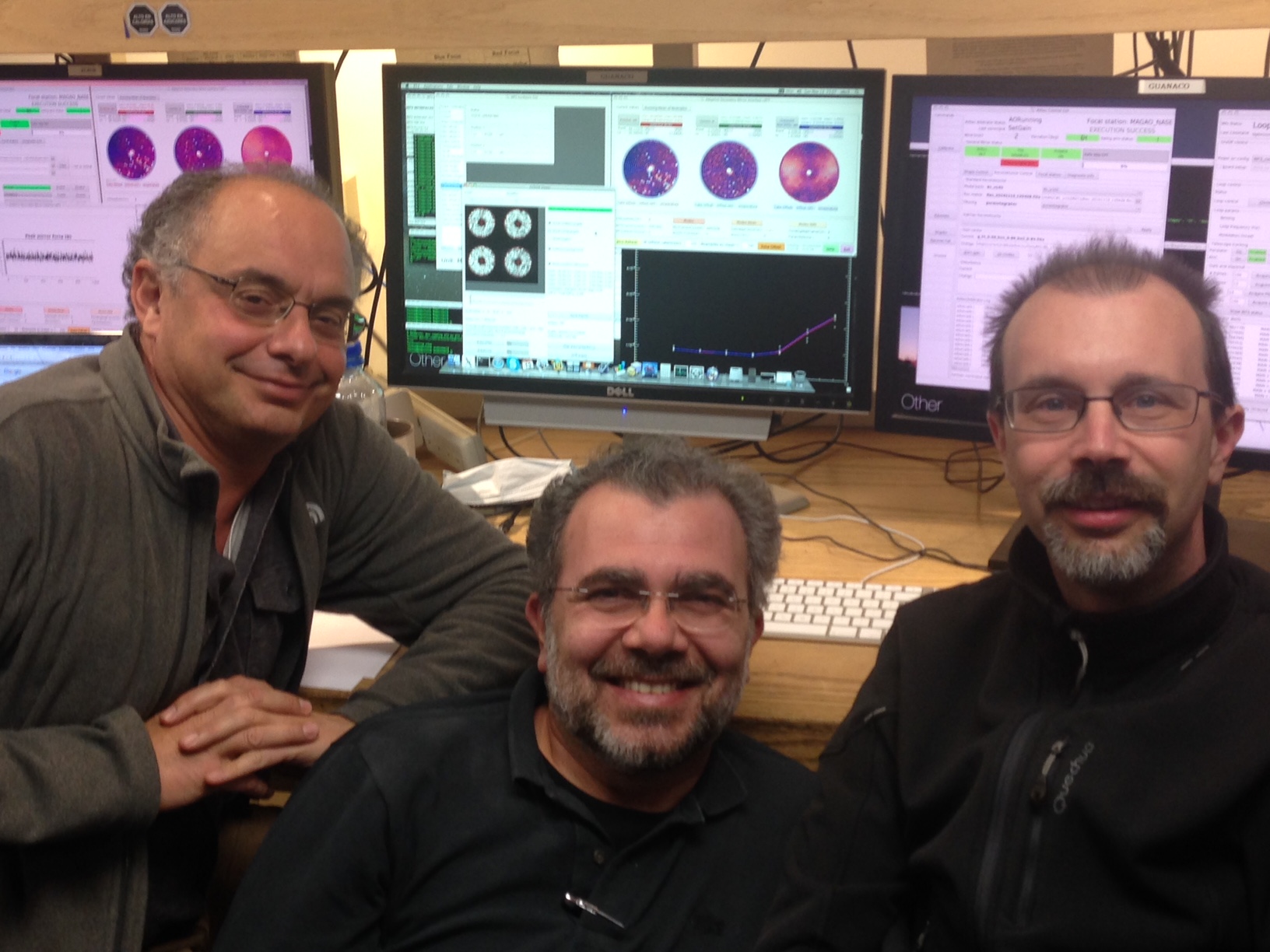
So as you can see it has been 10 months of almost constant repair and upgrading work which has lead us to this moment.
So tonight it is so exciting to note that in bad 1.0 seeing and super thick clouds (very bad weather for LCO) we were able to close the loop beautifully at 400 modes at 1 kHz with ease with ~60 ph/subap/sample at 3 and 1 lambda/D modulation.
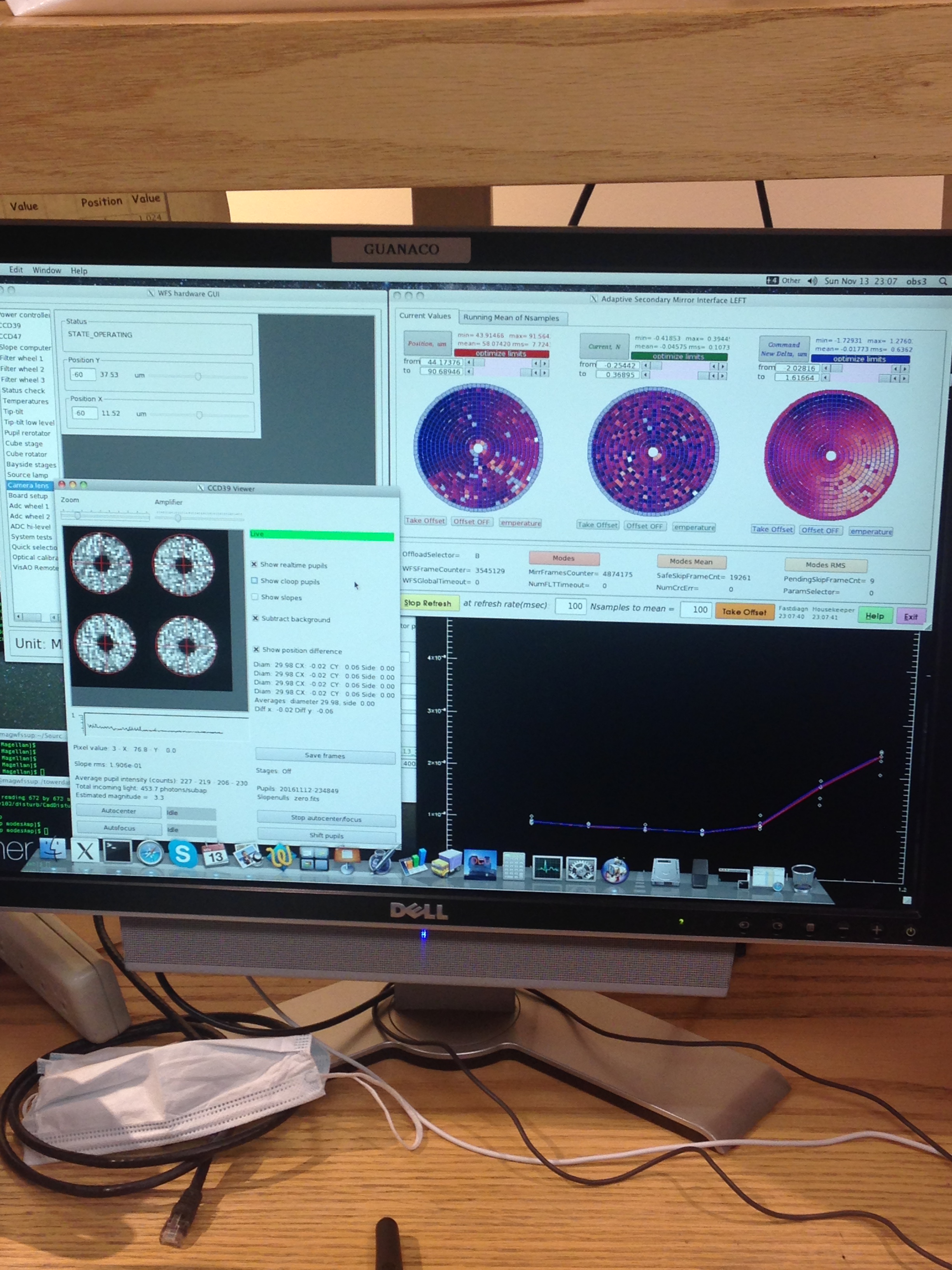
The results are excellent, we are all very happy (and the PI is very relieved)
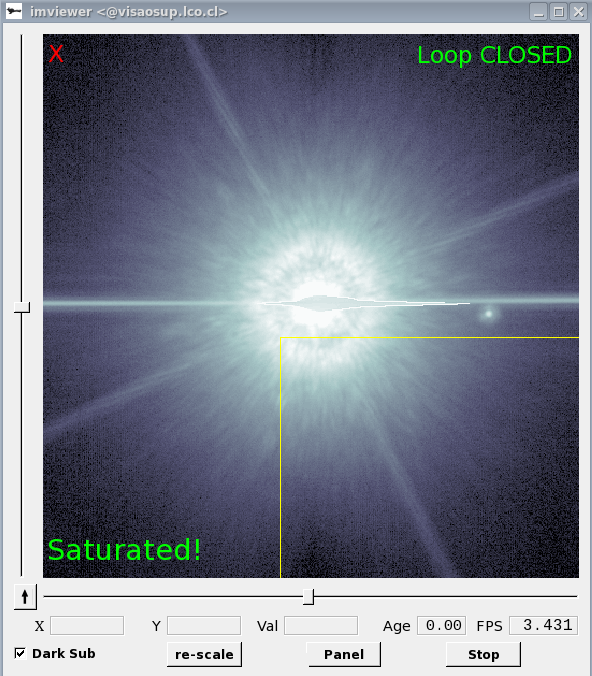
Here is one of my (and Emmeline’s) favorite songs:
Do you remember the Viscacha that sometimes sneaks into our pupils? This is a problem when our mirror is uncalibrated, and the signal it sends to the pyramid wavefront sensor confuses our software. We get dark spots in the pupil (images of the secondary) that often look like our Viscacha friends. They got in back in our first commissioning run (see here and here), and took some Italian magic to deal with.
So today, after a long and frustrating alignment, we got started closing the loop on our calibration source and immediately went to war with the pupil viscachas. Simone was even calling for Truly Nolen at one point.
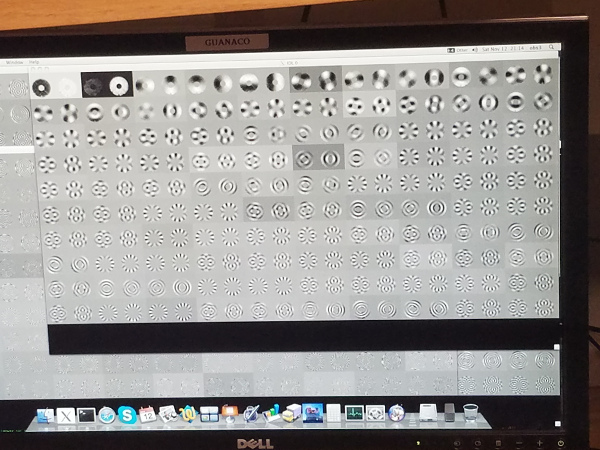
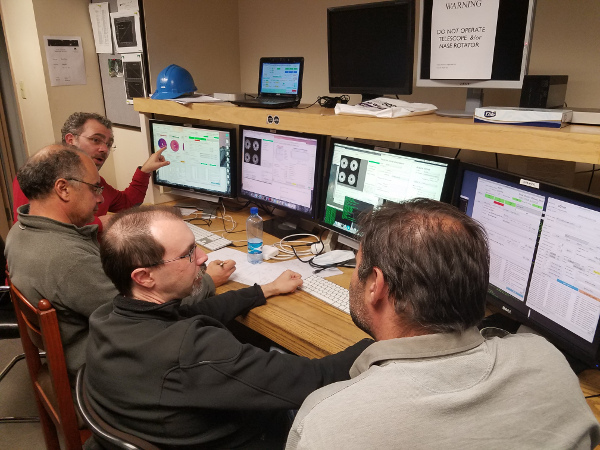
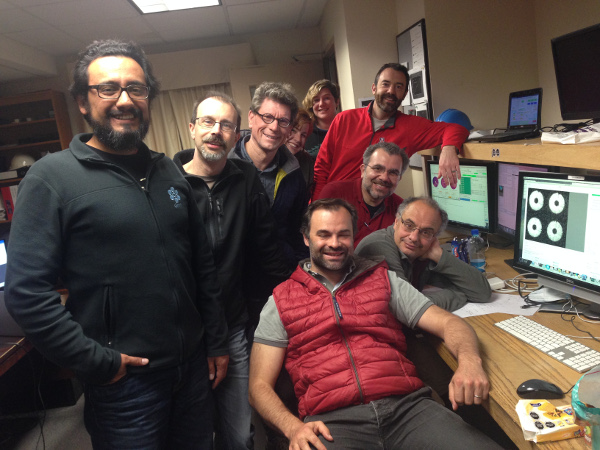
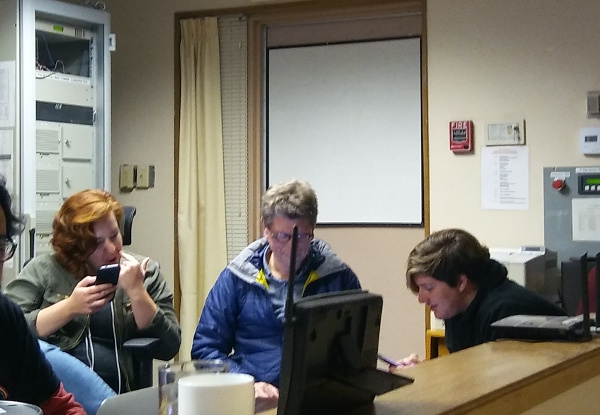
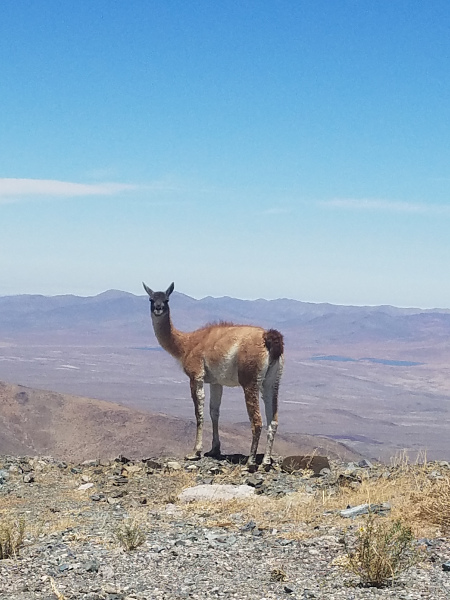
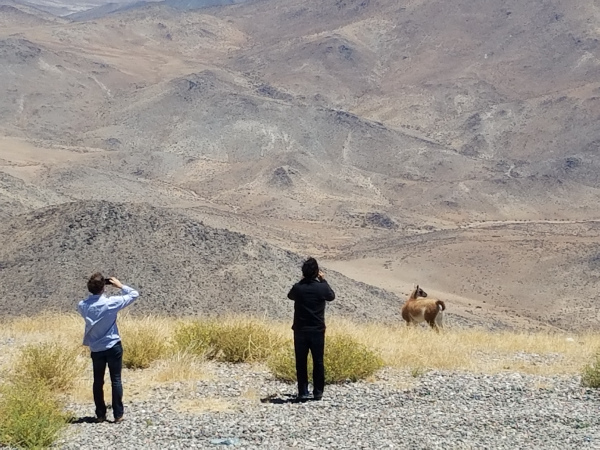
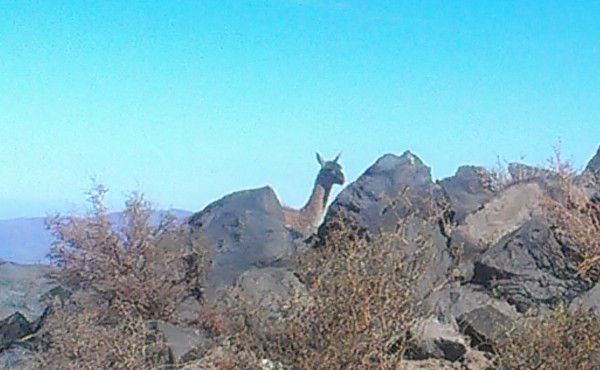
Today was an exciting day for the whole team: MagAO is mounted, poised, and ready to go!
The adsec is back, has been flattened, and is lookin’ good (after extensive reconstructive surgery).
The pyramid wavefront sensor has been updated (and is swankier than ever).
And finally, MagAO is bolted to the Clay telescope, and is ready to show us what its got!
But we didn’t do this alone. Our fuzzy friend Greg/Gary/Galileo Guanaco appears to be quite interested in the goings-on at the telescope. We caught him peeking at us in the control room this afternoon. According to Dr. Katie Morzinski, he has adopted us as his herd. Or he’s just a creeper. You can decide.
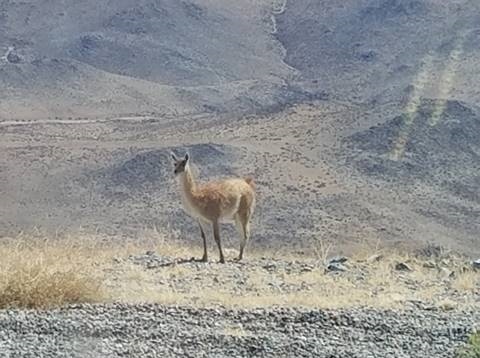
Greg/Gary/Galileo Guanaco didn’t prove to be TOO much help. He offered absolutely no assistance this evening, and we were forced to proceed without him. We soldiered on and brought MagAO up from the deep to be happily reunited with the telescope.
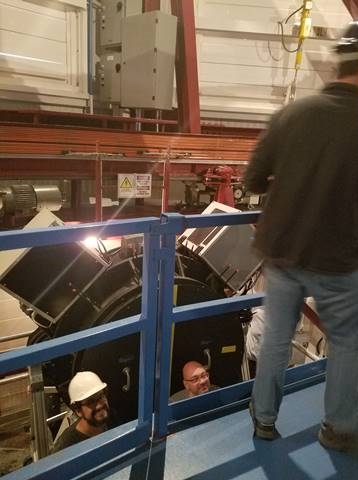
Once MagAO was back on the nasmyth, it took some expert maneuvering by some very talented people to get this 1800 lb beauty mounted back on the telescope.
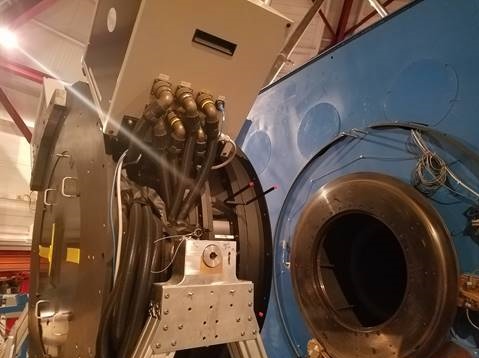
And after some fancy footwork, MagAO was reunited with its beloved telescope.
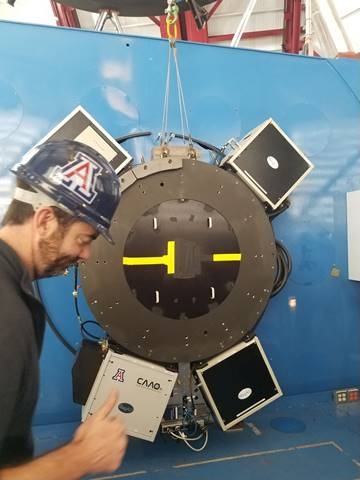
There were some final inspections by Dr. Laird Close, PI….
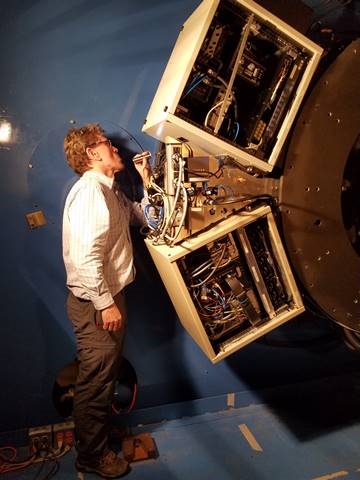
And some tricksy things to be dealt with, like the ‘anaconda’ – the snake-like coil carrying all of MagAO’s communication cables, power, and plumbing that wraps around the instrument very much like its namesake….
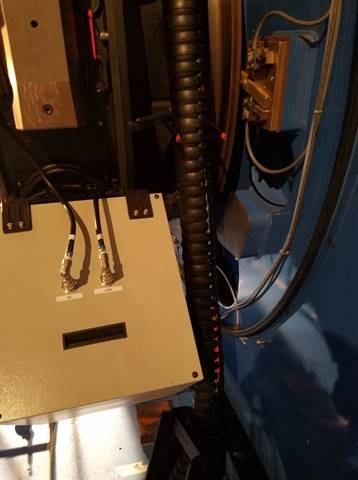
But in the end, it was all worth it. In the immortal words of Dr. Jared Males: “We’re back, baby!”
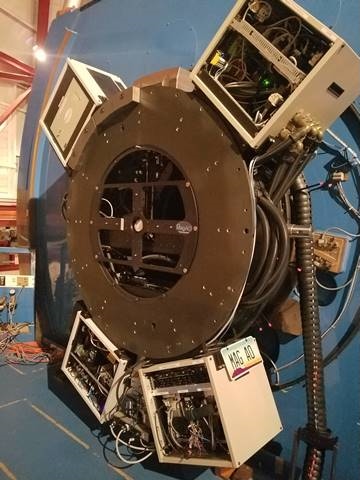
And now for your song of the day: